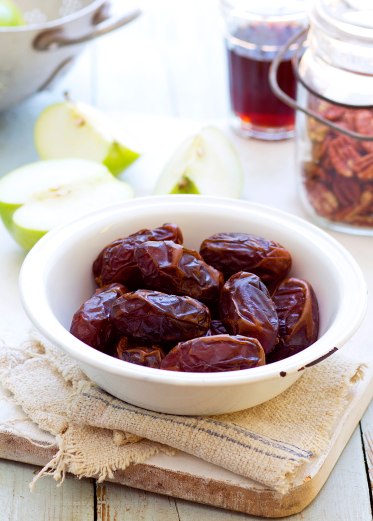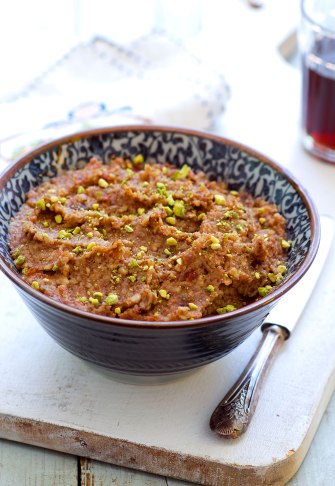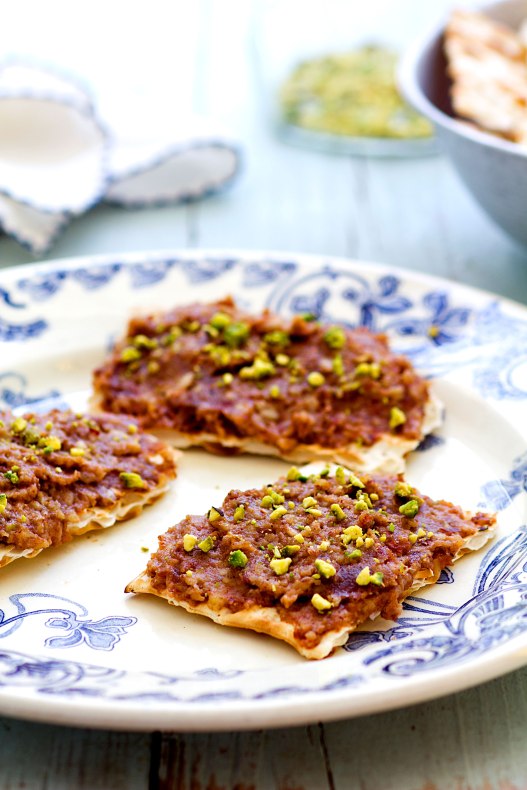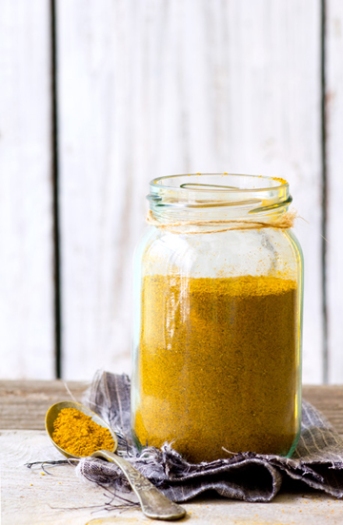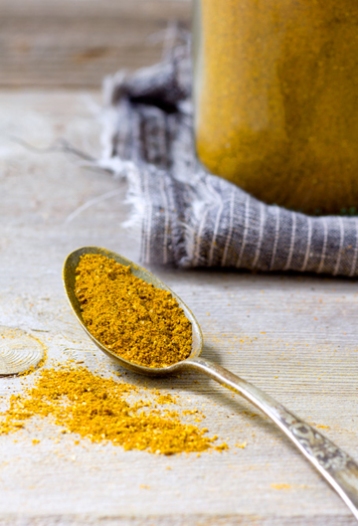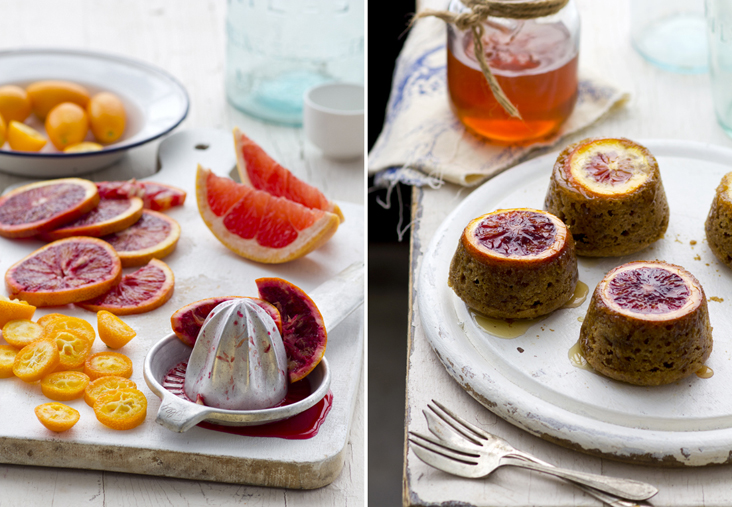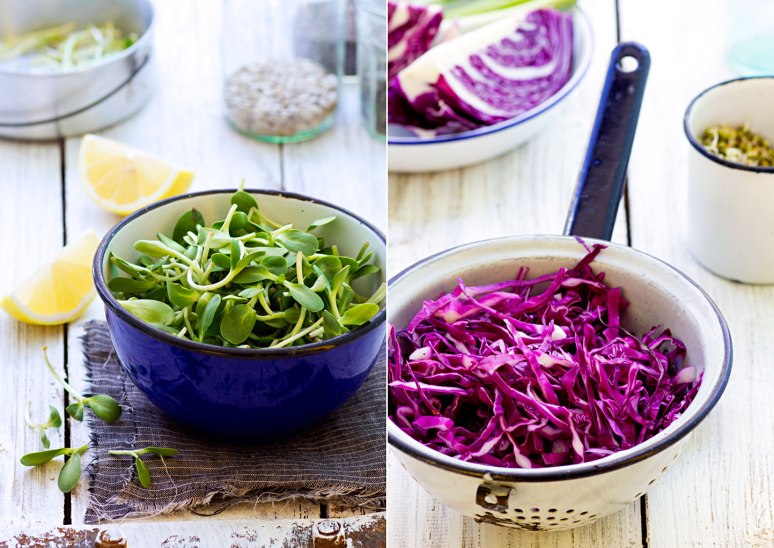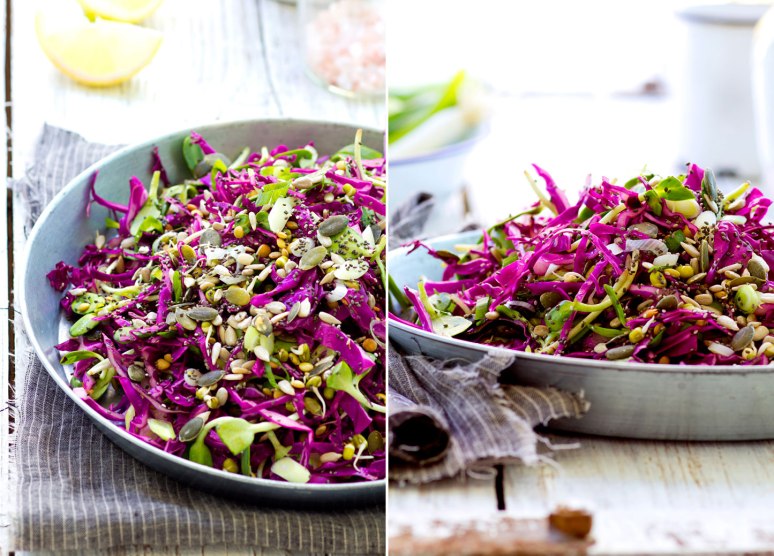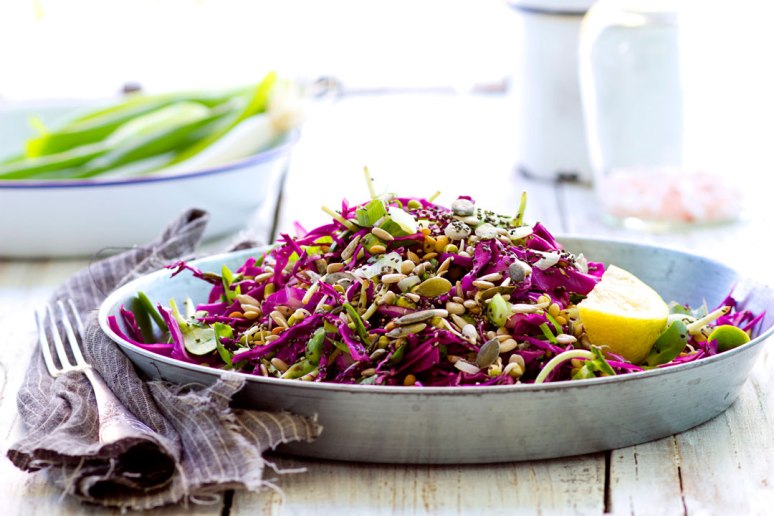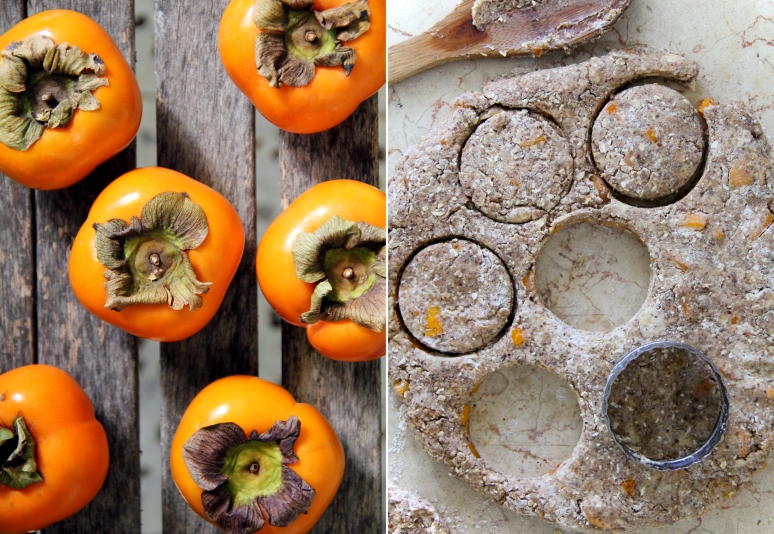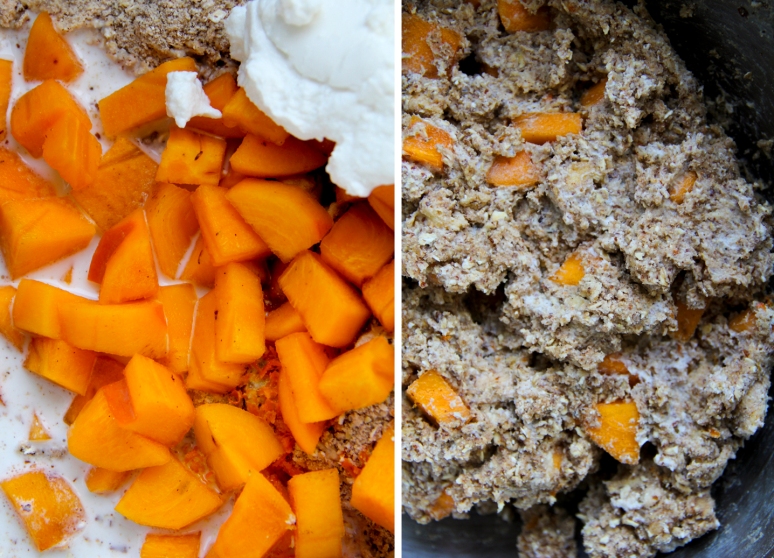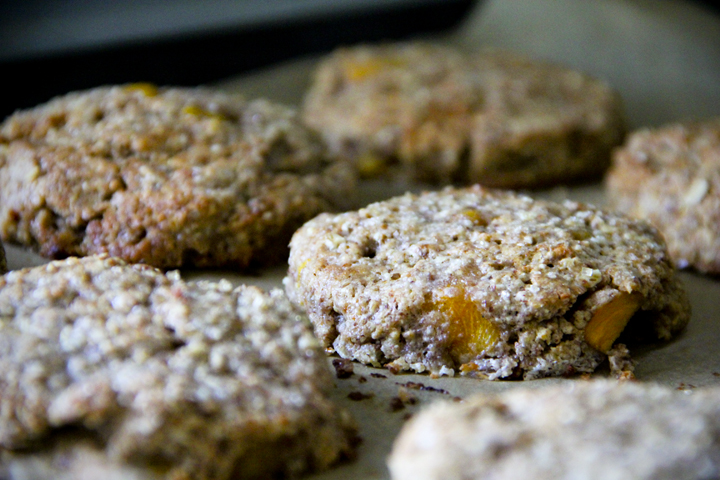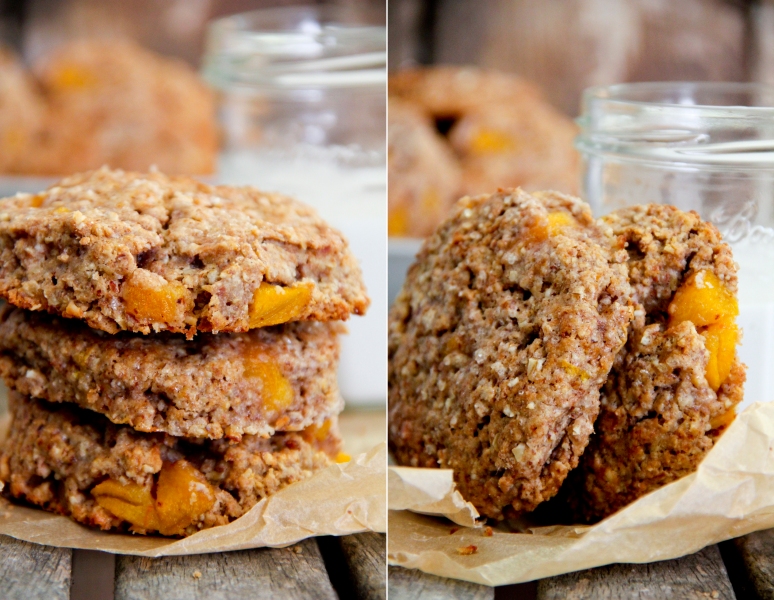Medjool Date and Apple Charoset Recipe
Ashkenazi Jews, those with Eastern European roots, prepare their charoset very differently than the the Sephardic Jews hailing from the Middle East and the Iberian Peninsula. The Eastern European charoset typically includes fresh apples, walnuts, cinnamon, and wine. Sephardic Jews on the the other hand, prepare theirs with dried fruits — usually dates and raisins — and a variety of mixed nuts, wine, and plenty of spices.
My mom was raised in Jerusalem, in a traditional Ashkenazi home, and grew up eating the classic apple-walnut version. Once she married, moved to the U.S., and started hosting her own Passover Seders, she mixed in dates and pecans into her mother’s original recipe. She created the perfect blend, and fused the two cultures by picking the best ingredients of both worlds.
This bicultural charoset recipe is made with tart Granny Smith apples, sweet and creamy Medjool dates, a medley of pecans and walnuts, a drizzle of honey, a generous splash of wine, and a pinch of spice. My mother’s charoset recipe is a family favorite — it’s fresh, succulent, and takes only minutes to prepare. Be sure to make extras as your guests will be scraping the bottom of the bowl, and you’re going to want leftovers for snacking on during the week and to mix into your morning yogurt or porridge.
Head over to The Kitchn to check out the entire recipe. Also be sure to read my latest recipe post: Charoset Ice Cream
Happy Passover!
Ingredient Highlight: Hawaij
Hawaij, a traditional Yementine spice blend, has two variations: one typically used in soups and broths, and the other in brewing coffee. The coffee blend contains warm spices like cardamom, ginger, and aniseed. Aside from spicing up your morning cup o’ joe, this concoction is also used in several dessert recipes. The savory version, commonly known as Hawaij for Soup, is the one pictured below. The brilliant, aromatic yellow powder is packed with cumin, turmeric, black pepper, cardamom, and a hint of cloves. Other, more sophisticated versions may also include saffron, caraway seed, and cinnamon. Differing from Indian curry powder, which carries substantial coriander flavors, hawaij, is dominated by pungent cumin. This earthy, versatile spice mixture compliments soups, stews, roasted vegetables, legumes, rice, and dry rubs for grilled meat. This Middle Eastern curry will add punch to a boring pot of weeknight lentils or can season a beef stew served at your upcoming festive dinner party.
Hawaij can be found at your local Middle Eastern market or online.
Upside Down Citrus-Honey Cakes
My favorite way to spend wintry weekend mornings is baking. There’s nothing better than a toasty kitchen, and an oven oozing with warm, citrusy aromas. It doesn’t matter how frosty it is outside, the windows mist over, and my tiny apartment transforms into a cozy cocoon. For this recipe I combined seasonal citrus slices and a blend of whole spelt flour and corn meal, interlaced with velvety olive oil. In just a few simple steps — and no mixer needed — you can make luscious cakes, infused with warm spices, zesty orange peel and naturally sweetened with a touch of honey. These beauties are lovely served as a crowd-pleasing dessert, and leftovers are perfect as an on-the-go weekday breakfast (if there are any left). Whip out your whisk, and bake a batch of Upside Down Citrus-Honey Cakes for your next weekend baking project!
Upside Down Citrus-Honey Cakes
1 cup corn meal
2 teaspoons baking powder
1/2 cup buttermilk
2 tablespoons freshly squeezed orange juice
brown sugar to line the muffin cups (about 1 teaspoon per cup)
12 blood orange slices, with peel in tact (or kumquats, clementines, meyer lemons)
Allow cakes to cool slightly, and remove from muffin trays. Serve citrus side up, with an extra drizzle of honey (optional).
Superfood Cabbage Salad
Summer is officially here and it’s brought along warm breezes, lighter layers, and fruity cravings. We’re so over heavy winter meals and ready for detox with bright salads, packed with plenty of vitamins and minerals. Loaded with crunchy purple cabbage, bean sprouts, nuts and seeds — this lemon-y salad will keep you cool and energized during long summer days.
Ingredients:
1 medium sized purple cabbage, shredded
2 cups sunflower sprouts
3/4 cup bean spouts (mung + lentil)
3 stalks of scallions, thinly sliced, on a diagonal
1/2 cup of mixed nuts + seeds, raw (sunflower, pumpkin and chia)
3 tablespoons olive oil
juice from 1 large lemon
himalayan salt + freshly ground black pepper (to taste)
…
Method:
Simply toss all of the ingredients in a large bowl and enjoy!
Enjoy!
Spiced Persimmon Scones
In the Winter, weekend mornings are best spent baking scones — delicious smells permeate, producing warmth and comfort. This recipe is super simple and can be used with fruit of your choice and a wide array of whole grains, and milks. For this batch I chose seasonal persimmons, whole spelt, almond meal, warm spices, and a combination of ricotta and coconut milk. Persimmons are front runners as far as Winter produce goes. I experiment with different recipes that incorporate this glorious fruit — they work really well in baked goods. Love persimmons as much as I do? Check out these Persimmon Muffins.
Ingredients:
*2 ripe persimmons, (peeled and cut into 1/2 inch cubes)
* 1 1/4 C. whole spelt flour
* 1 C. rolled oats
* 3/4 C. almond meal
* 3 TBS. blond cane sugar (plus more for sprinkling)
* 1 TSP. baking powder
* 1/2 TSP. baking soda
* 1/2 TBS. ground cinnamon
* 1 TSP. ground all-spice
* 1/2 TSP. ground cloves
* 1/2 TSP. salt
* 1 stick of cold butter (~113 g), cut into cubes
* 1/2 C. coconut milk (plus more for brushing)
* 1/4 C. ricotta
* 1/4 C. honey
* zest from 1 orange
Method:
1. Preheat oven to 400 degrees. Peel and chop persimmons into 1/2 inch pieces.
2. In a large bowl, mix together the spelt flour, oats, almond meal, sugar, baking powder, baking soda, spices, and salt.
3. Using your finger tips, rub the cold butter cubes into the dry ingredients, until large crumbs form (be careful not to over work the mixture).
4. Add the persimmon chunks, coconut milk, ricotta, honey and orange zest. Mix well with a wooden spoon.
5. Transfer dough on top a lightly-floured counter top and form into a 1 1/2 inch disk. (Lightly sprinkle flour over the top if the dough is too sticky).
6. Cut out scones, using a floured, 3 inch cookie/biscuit cutter.
7. Transfer the scones to a parchment-lined baking sheet. Brush tops with coconut milk, and sprinkle with some more cane sugar. Bake for about 20 minutes or until tops are golden brown. (Let the scones cool for 10 minutes, before serving).
Looking for more scone recipes? Take a look at these Cardamom Apple Scones. You can see all of the my Momtastic posts on my bio page here.
-
No Instagram images were found.

